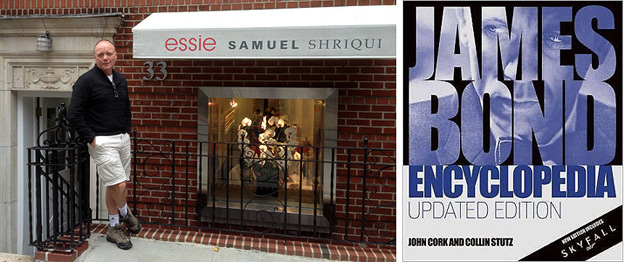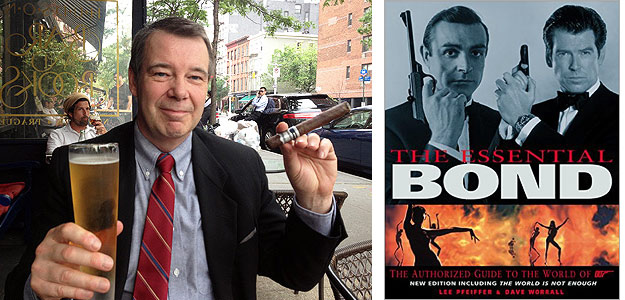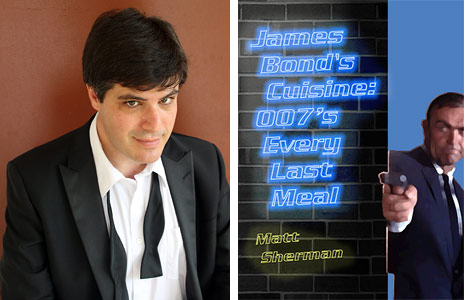“[Live and Let Die is] an early A-list film that recognized the value and influence of the generally under regarded blaxploitation film genre.” — Josiah Howard, author of Blaxploitation Cinema
The Digital Bits and History, Legacy & Showmanship are pleased to present this retrospective commemorating the 45th anniversary of the release of Live and Let Die, the eighth (official) cinematic James Bond adventure and notably the first to feature Sir Roger Moore as Agent 007.
Our previous celebratory 007 articles include Octopussy, Casino Royale (1967), Tomorrow Never Dies, Die Another Day, Dr. No, The Living Daylights, The Spy Who Loved Me, You Only Live Twice, Diamonds Are Forever, Casino Royale, For Your Eyes Only, Thunderball, GoldenEye, A View to a Kill, On Her Majesty’s Secret Service, Goldfinger, and 007… Fifty Years Strong.
The Bits continues the series with this retrospective featuring a Q&A with an esteemed group of film historians and James Bond authorities who discuss the virtues, shortcomings and legacy of 1973’s Live and Let Die. [Read on here...]
The participants for this segment are (in alphabetical order)…
Jon Burlingame is the author of The Music of James Bond (Oxford University Press, 2012). He also authored Sound and Vision: 60 Years of Motion Picture Soundtracks (Watson-Guptill, 2000) and TV’s Biggest Hits: The Story of Television Themes from Dragnet to Friends (Schirmer, 1996). He writes regularly for the entertainment industry trade Variety and has also been published in The Hollywood Reporter, Los Angeles Times, The New York Times, and The Washington Post. He started writing about spy music for the 1970s fanzine File Forty and has since produced seven CDs of original music from The Man from U.N.C.L.E. for the Film Score Monthly label. His website is JonBurlingame.com.
John Cork produced the special features for the home entertainment release of Live and Let Die. He is the author (with Collin Stutz) of James Bond Encyclopedia (DK, 2007) and (with Bruce Scivally) James Bond: The Legacy (Abrams, 2002) and (with Maryam d’Abo) Bond Girls Are Forever: The Women of James Bond (Abrams, 2003). He is the president of Cloverland, a multi-media production company. Cork also wrote the screenplay to The Long Walk Home (1990), starring Whoopi Goldberg and Sissy Spacek. He wrote and directed the feature documentary You Belong to Me: Sex, Race and Murder on the Suwannee River for producers Jude Hagin and Hillary Saltzman (daughter of original Bond producer, Harry Saltzman). He contributed new introductions for the original Bond novels Casino Royale, Live and Let Die, and Goldfinger for new editions published in the U.K. by Vintage Classics in 2017.
Josiah Howard is the author of Blaxploitation Cinema: The Essential Reference Guide (FAB Press, 2008). His other best-selling books include Donna Summer: Her Life and Music (Tiny Ripple, 2002), Famous People Eat Too! A New York City Food Server’s Encounters with the Rich, Famous, Semi-Famous and Infamous (iUniverse, 2009) and Cher: Strong Enough (Plexus, 2013). His writing credits include articles for the American Library of Congress, The New York Times and Reader’s Digest.
Lee Pfeiffer is the author (with Dave Worrall) of The Essential Bond: The Authorized Guide to the World of 007 (Boxtree, 1998/Harper Collins, 1999) and (with Philip Lisa) The Incredible World of 007: An Authorized Celebration of James Bond (Citadel, 1992) and The Films of Sean Connery (Citadel, 2001). Lee was a producer on the Goldfinger and Thunderball Special Edition LaserDisc sets and is the co-founder and Editor-in-Chief of Cinema Retro magazine, which celebrates films of the 1960s and 1970s and is “the Essential Guide to Cult and Classic Movies.”
Bruce Scivally is the author (with John Cork) of James Bond: The Legacy (Abrams, 2002). His other books include Superman on Film, Television, Radio & Broadway (McFarland, 2006), Billion Dollar Batman: A History of the Caped Crusader on Film, Radio and Television from 10¢ Comic Book to Global Icon (Henry Gray, 2011), Booze, Bullets & Broads: The Story of Matt Helm, Superspy of the Mad Men Era (Henry Gray, 2013) and Dracula FAQ: All That’s Left to Know About the Count from Transylvania (Backbeat, 2015). As well, he has written and produced numerous documentaries and featurettes that have appeared as supplemental material on LaserDisc, DVD and Blu-ray Disc, including several of the Charlie Chan, James Bond, and Pink Panther releases. He is Vice President of New Dimension Media in Chicago, Illinois.
Matt Sherman is the author of James Bond’s Cuisine: 007’s Every Last Meal (CreateSpace, 2014). He has contributed to Chicago Tribune, The Daily Mail, Los Angeles Times, The New York Times, Parade, Time and Time Europe. His website is BondFanEvents.com. His events for Bond fans to meet Bond actors, authors and filmmakers recently celebrated a 20th anniversary. Matt’s fan events, including 2018-19 events in New Orleans, Atlanta and Las Vegas, are at BondFanEvents.com.
The interviews were conducted separately and have been edited into a “roundtable” conversation format.
And now that the participants have been introduced, might I suggest preparing a martini (shaken, not stirred, of course) and cueing up the soundtrack album to Live and Let Die, and then enjoy the conversation with these James Bond authorities.
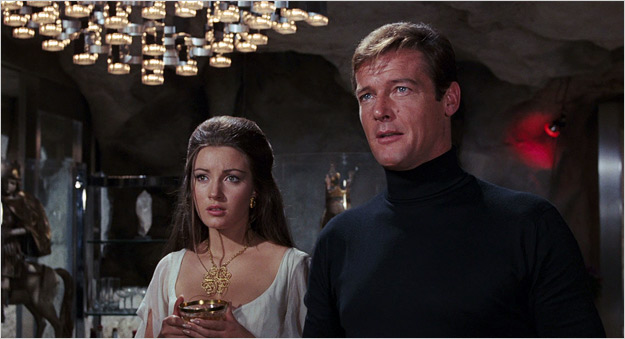
Michael Coate (The Digital Bits): In what way is Live and Let Die worthy of celebration on its 45th anniversary?
Jon Burlingame: The film marked a sea change in the history of 007 on screen. Sean Connery’s reappearance as Bond in Diamonds Are Forever wiped the slate clean after George Lazenby’s one-shot in On Her Majesty’s Secret Service, so the recasting of Bond was major news. Roger Moore took the entire franchise in a new direction, lighter and more carefree, while producers Cubby Broccoli and Harry Saltzman still kept the action and adventure at a high pitch. And, from my point of view as a music historian, the absence of composer John Barry for the first time and the presence of a huge pop star as writer and performer of the movie theme (Paul McCartney and Wings, in this case) marked a new direction for Bond music as well.
John Cork: Live and Let Die is the most uniquely American James Bond film. It arrived at a time of growing political turmoil in the United States, of an amazing explosion of blaxploitation films, a spreading drug culture, and a deep distrust of governmental institutions. It did not seem like the time for a spy film. Yet, Live and Let Die delivers. Guy Hamilton and Tom Mankiewicz set the perfect tone. Harry Saltzman and Cubby Broccoli hired the perfect James Bond. And the action is still some of the best of any film. The boat chase has stunts that never fail to amaze. The supporting cast all deliver great performances. George Martin’s score holds up today. Paul and Linda McCartney’s title song still reigns as a classic. It is the film that finally proved that a Bond film could be a global success without Sean Connery. The film adopts a cool, confident sense of humor that still delivers laughs. The death of Hamilton in New Orleans (“Whose funeral is it?” “Yours”) is one of the great cinematic murders that sets the tone and style that still works. It was a film that walked a cultural tightrope just as smoothly as Bond skips across live alligator backs. It managed to confront the racial demons from the original source novel without slipping into the racist assumptions that bedeviled Fleming’s generation.
Josiah Howard: It really is such a special film; and so influential. Forty-five years have passed and it still holds up. It feels modern; fresh. Today Hollywood is struggling with issues of inclusion — especially as it relates to African American representation in cinema. Well, here’s a film, from Britain no less, that got it right: 45 years ago. All the black characters in Live and Let Die are treated with respect. They are smart, funny, and purposeful. And in the case of (former Playboy Bunny) Gloria Hendry as Rosie, beautiful.
Lee Pfeiffer: It’s obvious that this is a landmark Bond film because it introduced Roger Moore in the role of 007. Bond fans were experiencing an emotional rollercoaster in recent years. Connery had quit the series, then was replaced by George Lazenby, who also quit the series. Connery came back again but then quit the role once more. This time producers Cubby Broccoli and Harry Saltzman didn’t want to try their hand at developing new talent, as was the case with Lazenby. They were very angry that he quit the role after they had given him the opportunity of a lifetime. Now they wanted an established star. Roger Moore was a good choice, though he was not without controversy. Critics felt he was too amicable and not tough enough for the role. However, he had built in star power based on his years in The Saint TV series. His latest show The Persuaders was a big hit in Europe but flopped in America, where Moore’s drawing power wasn’t as strong. Ironically, the failure of that show made him available for the Bond films.
Bruce Scivally: Why celebrate Live and Let Die? It’s worth of celebration because it began Roger Moore’s long reign as the 007 of the 1970s and early 80s. After George Lazenby had shown how thankless it could be to step into Sean Connery’s shoes, it took either a high degree of confidence or insanity to take over the role of the world’s most popular superspy. Moore, a seasoned actor coming off many years of portraying The Saint and co-starring with Tony Curtis in The Persuaders on television, seemed to possess the former. His solution to playing Bond was to remake 007 in his own image, with more verbal witticisms and a looser, tongue-in-cheek approach than Connery, whose Bond was more physical and menacing. Co-scriptwriter Tom Mankiewicz provided Moore’s 007 with some choice lines, which Moore expertly delivered (“…an underground monorail — connected to the last refuge of a scoundrel, no doubt.”), and he acquitted himself quite nicely in the action scenes, as well, making for a smooth transition that would carry him through seven James Bond films over a period of 12 years.
Matt Sherman: Live and Let Die is an iconic Bond film. The dialogue and humor from screenwriter Tom Mankiewicz is snappy — fans frequently quote from this film. Roger Moore and the supporting cast are interesting and give strong performances. The film has exciting action and thoroughly uses Jamaica for beautiful shooting locations. The Live and Let Die film score is also terrific. Paul McCartney’s theme song is a fan favorite and I love the George Martin soundtrack above all other Bond scores not by John Barry. I listen to it often.
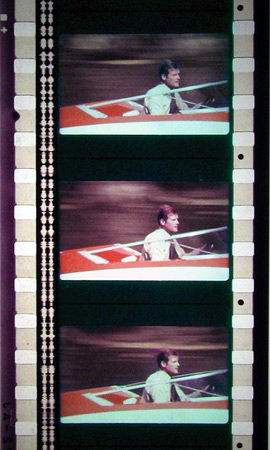 Coate: Can you describe what it was like seeing Live and Let Die for the first time?
Coate: Can you describe what it was like seeing Live and Let Die for the first time?
Burlingame: In many ways it was an edge-of-your-seat experience, visiting the movie theater in the summer of ’73 — not so much the suspense and tension within the story but just watching to see what Moore’s performance would be like. Was he the right choice for Bond? Also, remember that this was the period of “blaxploitation films,” which were mostly aimed at African American audiences but were proving popular with white crowds as well (Shaft and Superfly, for example), so having a black villain, black henchmen and at least one black Bond girl were startling but welcome — and, as always with Bond, staying up-to-date with trends and the times. I must admit I cringed through the J.W. Pepper scenes and still do to this day. On the other hand, what a treat it was to watch and appreciate the extraordinary Geoffrey Holder as Baron Samedi.
From a musical point of view, I found McCartney’s Live and Let Die theme interesting but unsettling at first — because it was such a departure from the Barry themes to which we were accustomed. Still, it was so spectacularly edited with Maurice Binder’s exploding-flaming-skull imagery in the main title that it didn’t matter what I thought. And George Martin’s score, based partly on the McCartney theme, had a raw and more rock ’n’ roll quality than we had previously heard in Bond scores. That took a couple of viewings for me; I always loved his Solitaire theme, however, and his take on the Bond theme is terrific. I have come to appreciate both in much deeper ways over the years, and when you consider that McCartney is still performing Live and Let Die in concert, that certainly says a lot for its staying power.
Cork: I was 11 years old, and my friend Lee Nelson and I rode our bikes to see Live and Let Die at the Capri Theater in Montgomery, Alabama. I had grown up around speedboats as my grandparents had a lake cabin. I knew everything a fast boat could do, and then I saw Live and Let Die. My mind was completely blown. I was just hitting puberty and totally uncertain about these mysterious females of the species, and seeing this confident male character who was totally at ease with his sexual desires without seeming like some leering pervert appealed to me. A loved the theme song, and really everything about the film from start to finish at the time. Years later, when promoting James Bond: The Legacy, I did a book signing at the Capri, and a few years after that, I rode my bike across Los Angeles to see Live and Let Die at the Aero Theater in Santa Monica. When Sam Mendes was asked why he chose to direct Skyfall, he told NPR, “I wanted to kind of get back in touch with my 12-year-old self, [who] had sat down and watched Live and Let Die with Roger Moore…which was my first Bond experience, and remember some of that excitement.” Whenever the day is dark or my mood is foul, I can think back on that experience of watching Live and Let Die. I can be that kid all those years ago, and then think about all the adventures those couple of hours opened up for me. Seeing Live and Let Die was one of those moments that truly changed the course of my life.
Howard: When I first saw it, I was blown away! It was in a downtown theater in a small city in New Jersey called Plainfield. I was ten at the time so I was very impressionable. First of all, I had never seen a black person man a speedboat before: I was ecstatic! I’d seen several blaxploitation films at the same theater so I was familiar with action films, but Live and Let Die was different. It was bigger, more pronounced; there were more car crashes, more exotic locations, better production values and music. It was what the best blaxploitation films — with their miniscule budgets — aspired to be. Another thing that made an impression on me were the endless gadgets and tricks. The wrist watch, the flute that’s also a microphone, the tables disappearing into the floor, the secret passages: I had never seen anything like it.
Looking back, I remain a huge fan of the film but have questions about actress Gloria Hendry. Her character Rosie is pretending to be something she isn’t: independent and strong — and then she’s revealed to be the opposite. But the reveal doesn’t ring true. To me Hendry’s persona is a straightforward “strong black woman.” That’s why she was a blaxploitation film star. In pictures like Black Belt Jones, Hell up in Harem and Savage Sisters she always took care of her own business — even if sometimes she did have a tender heart. It’s great that she’s Bond’s first black on-screen liaison but if we’re supposed to believe that Rosie is out of her element and needs James Bond’s guidance, that’s asking a bit too much!
Pfeiffer: Like most Bond fans, I was cautiously optimistic. We knew that if Roger didn’t click, the series would be in danger. We all loved Connery in the role and most fans were quite enthused about Lazenby and we were disillusioned when he left the series. Fortunately, audiences — and myself included — were very pleased with Live and Let Die. I got to know Roger Moore well beginning in the late 1990s and he would talk candidly about his experience. He knew that the whole franchise was riding on his shoulders. He was friends with Sean Connery, which probably made his burden worse. Image failing where your friend had succeeded. But audience reaction was very strong and it was clear that Roger Moore had “clicked” with the fan base. Critics were lukewarm, but the boxoffice was good and that was all that mattered. I was 16 years old when the film opened and it passed the litmus test: my friends and I paid to see it many times.
Scivally: My first encounter with Live and Let Die was on television, when it was broadcast on ABC. At that young age, I was devouring anything James Bond, so I wasn’t viewing it with a particularly critical eye. Even so, it struck me that James Bond, who in previous films had been involved with villains whose plots involved space ships and possible nuclear annihilation, had been reduced to a drug enforcer, handing a case that would have been more appropriate for an American DEA agent, not a British double-O. The film also continued the trend from Diamonds Are Forever of having a crash-filled car chase, though with the novel addition of boats speeding over the Louisiana Bayou. Though this type of action seems quaint now, it was eye-popping in 1973, before Burt Reynolds’ “good ol’ boy” movies made it ubiquitous.
Sherman: I was too young to fully appreciate the film. It was a Bond film, so I liked it very much, one that’s grown on me greatly with time. Specifically, I used to find the boat and other chases overlong, but now I see them as tautly edited and enjoyable. It’s rather that many different scenes and concepts are inside the boat, plane and car chases.
Coate: Can you compare and contrast Roger Moore’s inaugural performance as Agent 007 with that of the other actors who have portrayed the character?
Burlingame: Well, obviously he’s number two from that early era. For those of us who were around in the ’60s, Connery was always the man to beat. And because he was much more dangerous, he felt more like Ian Fleming’s creation to us. I have found that younger people tend to like Moore’s more flippant Bond, and I do have a soft spot for that side of the Moore 007 — all the silly double-entrendres that he carried off so well. But, in retrospect, we’ve been pretty lucky, considering Connery, Moore, the underrated Timothy Dalton, Pierce Brosnan and now Daniel Craig. Remember when John Gavin was signed as Bond before Connery came back to do Diamonds? What a disaster that would have been.
Cork: Roger Moore not only managed to make Bond his own, but he transformed 007 from the very first scene. I cannot fathom Connery’s Bond participating in a Feydeau farce with a semi-nude girl scampering about trying to hide from her lover’s boss, but it was perfect for Moore. It set his Bond up as a more human, fallible 007, but his interactions with M also define him as the prankster Bond with a devilish streak. Unlike Connery, one never gets the sense that sex is an animal passion for Moore. It is, instead, a sport that he casually enjoys more for the amusement than the physical pleasure. If Moore’s Bond were asked to rank the perks of his job, one could imagine that “I get to have casual sex with numerous beautiful women” would fall somewhat lower than “I get to be a smart ass.” I enjoy all the Bond actors, even David Niven, but Moore needs no carefully-lit Connery-style close-ups like Lazenby, no Spielbergian track-in reveals like Dalton, no punch-up introductions like Brosnan or Craig. He is the only Bond, aside from Niven, introduced by his own comic shtick. His performance can best be summed up by his last line: “Just being disarming, darling.”
Pfeiffer: I always thought that Roger’s introduction as Bond should have been more dramatic and memorable. He’s simply introduced lying in bed with lovely Madeline Smith as an Italian secret service agent. I thought that screenwriter Tom Mankiewicz deprived Roger of the kind of memorable, carefully crafted introduction that Sean Connery or George Lazenby had. That aside, Roger’s warmth and witty personal nature came through in his performance as Bond. He once told me that his greatest challenge was to make the role his own without appearing to imitate Connery. Thus, he doesn’t wear a tuxedo, foregoes the “shaken, not stirred” bit and smokes cigars. But he was nervous about the reception. Shortly after he signed for the Bond role, his young son asked him to take him to the cinema to see a James Bond double feature. When Roger reminded him that daddy is now going to be James Bond, his son replied “I mean the real James Bond: Sean Connery!” That’s enough to sow the seeds of self-doubt. Fortunately, it all went well and Moore’s track record extended over six more films and twelve years. Quite an achievement when dealing with a fickle public.
Sherman: Sir Roger stepped into the role seamlessly. Interestingly, to distinguish himself from Sean Connery, in Live and Let Die he never raises an eyebrow, wears a tuxedo or orders a martini. But Roger played the role confidently and made it fully his own. He never breaks character or misses a beat. Possibly only Connery’s confidence in Dr. No is comparable.





